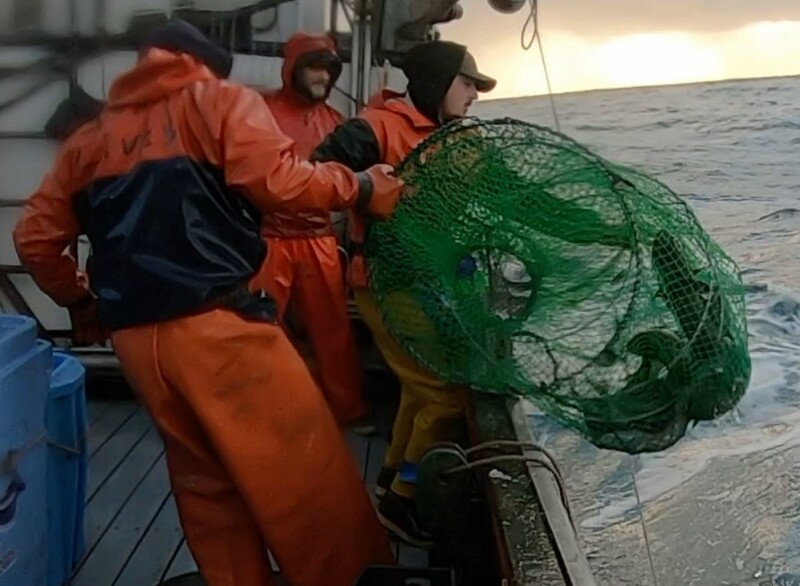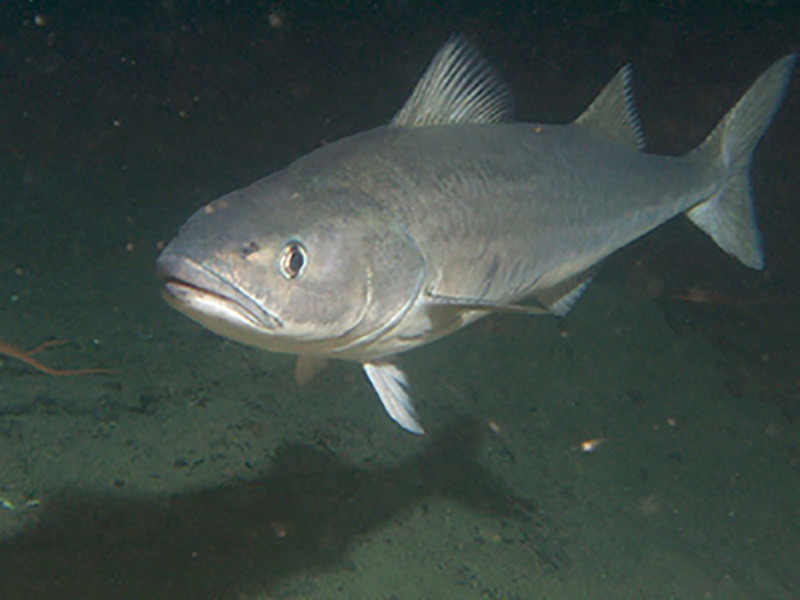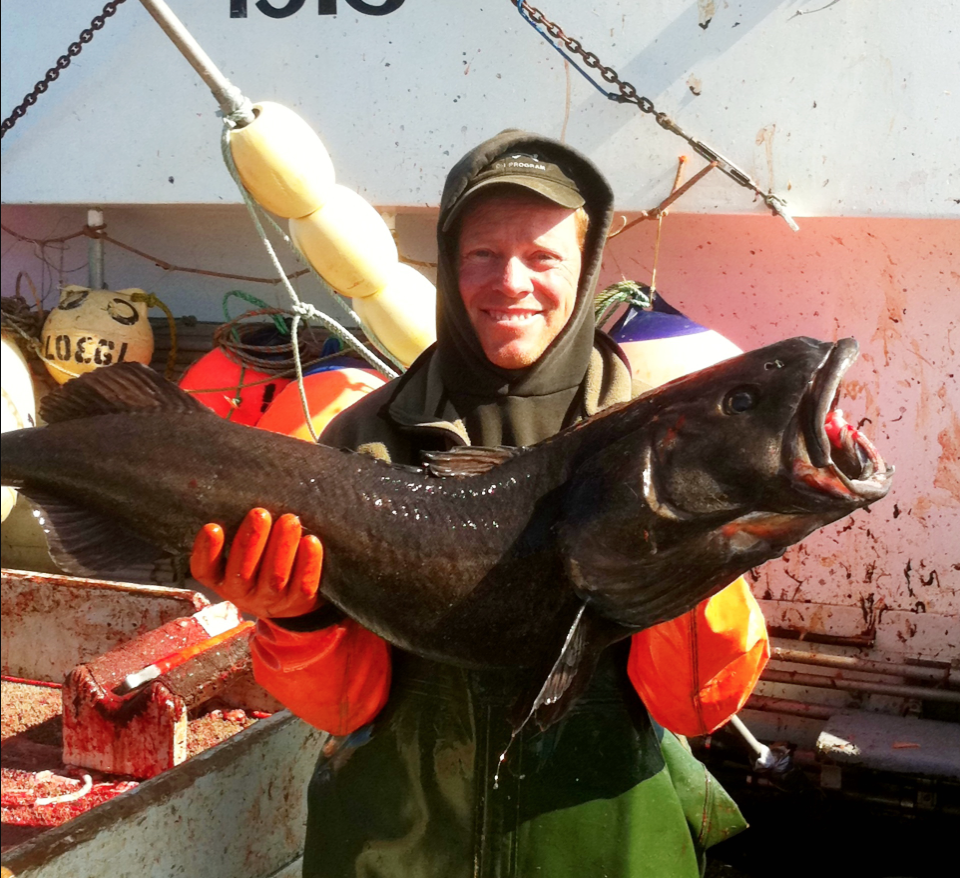Nearly all sides agree that gear switching between trawls and fixed gear for blackcod warrants a definitive review of the individual fishing quota, or IFQ system for the Pacific non-whiting fleet.
Some would say they saw it coming. Others argue that it’s a market-driven blip, and that an increase in ex-vessel prices paid for groundfish caught in the West Coast trawl fishery would self-regulate the problem.
Gear switching has been a viable option in harvest strategies since the inception of the license limitation program in 1994, and under Amendment 20 for more than a decade. Trawlers catch blackcod, Dover sole and rockfish simultaneously in their tows and need the blackcod shares to keep towing for their allocated pounds of Dover sole and dozens of other species.
But some worry that disproportionately high prices paid for blackcod compared to the other species in the groundfish mix could lead to the migration of blackcod shares from the trawl sector to fixed gear operations.
“I think that the chances are pretty slim that the market demand for Dover (sole) will increase to the point that ex-vessel prices for Dover will be sufficient to close the price gap on sablefish,” says Michele Conrad, a principal strategist in fisheries policy and management issues with Oceanbeat Consulting, in Olympia, Wash.
Trawlers focused on the Dover sole, thornyhead rockfish and sablefish complex (DTS) have been deemed most likely affected by increased gear switching. In recent years attainment of the Dover sole harvest allocated to the trawlers averaged a mere 20 percent. Meanwhile, an analytical document prepared for the Pacific Fishery Management Council in October 2022 shows that from 2016 to 2019 fixed gear accounted for 32 to 35.3 percent of the northern sablefish allocation.
Given the trend, the council will review and discuss four alternatives beginning in 2023 that range from taking no action to actions controlling the movement of quota allocations between the fixed gear and trawl groups in order to mitigate further expansion in gear switching. At the extreme end of options, the council could designate that all trawl shares since the control date of Sept. 15, 2017 revert to trawl only.
Though language in the alternatives is complex, the basic criterion for discussion and future action will involve using quota shares – referred to as Alternative 1 – or quota pounds (Alternative 2), or gear switching endorsements based on permit or vessel qualifications (Alternatives 3 and 4).
“This is probably one of the toughest decisions that PFMC has had to grapple with,” says Conrad. “I don't believe that the issue itself is complicated, but because it is a market-driven issue and not a regulatory one, there are many variables.”
Bob Alverson, manager of the Seattle-based Fishing Vessel Owners’ Association agrees.
“This is the first time a council has changed the nature of the IFQ as an asset in any council,” he says. “This would take a purchased IFQ and tell that person they could no longer use it as they had purchased it; so with fixed gear on a fixed gear boat the IFQ would be labeled trawl only. Their value would be cut by 60 to 70 percent, if they cannot use it as they purchased it, for pot and longline gear.”

The current value of blackcod shares that are owned fluctuated between $10 and $12 per pound in November, according to Alverson, and much of that value rides on the flexibility of gear switching. Alverson and others note that designating the shares to trawl only could devalue the blackcod industry by more than $50 million.
There is no easy fix, especially when gear switching had been touted as one of the creative ways to reduce the incidental catch of overfished stocks plaguing the trawl fisheries in the 1990s. In the years of license limitation (1994 to 2000) - the predecessor to the IFQ program - trawlers were put on trip limits and gear and area restrictions. As part of attaining their quotas of target species, volumes of blackcod and other species were discarded.
Language within the Environmental Impact Statement (EIS) underpinning the trawl quota share program in Amendment 20 acknowledged gear switching among options to fish selectively for blackcod using pots, longline gear or other methods. In the drafting of Amendment 20, much deliberation had been devoted to whether trawlers could use alternative gear in their quest to attain their harvest shares – or if shares awarded to trawlers could only be harvested by trawl gear.
An opposing consideration would have allowed trawlers to fish their shares with alternative gear but would have permanently designated the shares as non-trawl after they had been switched. Given the public perception of trawling and fisheries conservation at the time, the irreversible conversion of trawl shares to non-trawl shares would have been an additional measure in reducing the fleet. In the end the council voted to allow acquisition of trawl shares by non-trawl vessel owners and vice versa.
Revisiting the issue since 2017, the council began drafting alternatives in 2021 with input from the Sablefish Management and Trawl Allocation Attainment Committee (SaMTAAC). The end goal was to set 29 percent as the maximum gear switching level.
As of November 2022 analytical documents have been prepared outlining the possible economic repercussions of each alternative among various sectors of each fleet. The Groundfish Advisory Subpanel suggested in November that factors other than gear switching may be suspect in under- attainment of DTS quotas.
“The Council’s analysis of the current alternatives to restrict gear switching fail to explain how these flounder markets are enhanced and provide more opportunity to trawlers,” it says in the groundfish panel’s report. “In fact, during the Sablefish Management and Trawl Allocation Attainment Committee discussions, the staff pointed out that should other flounder markets increase, trawlers would be incentivized to use their sablefish to harvest the other groundfish. In essence, the suggested gear switching problem would disappear on its own, through natural market forces.”
The Fishing Vessel Owners’ Association expressed similar concerns in its resubmission of a 2021 letter to the council stating that the council's analysis lacks the rationale proving that limiting the amount of fixed gear harvest would increase attainment of the Dover sole, blackcod and other species in the trawl sector.
On the other side of the equation is the fear that ex-vessel price differences between trawl-caught and fixed-gear blackcod will eventually lead to the majority of trawl quota share locked into use by fixed gear vessels.
A 2019 sablefish and trawl attainment report to the council noted that average ex-vessel prices for fixed-gear blackcod ranged from 70 cents to $1.13 per pound higher than trawl-delivered fish.
The other issue thought to encourage increases in gear switching involves quota share leasing prices between blackcod, Dover sole and other fish in the trawling mix. According to NOAA’s quota pound price data for 2022, IFQ shares of blackcod were trading at 46 cents a pound, and there had been 54 trades as of Nov. 15. Dover sole shares had insufficient data to report any movement, but another common trade species, petrale sole, went for 25 cents per pound with 53 trades during the same period.
“The majority of sablefish leased to fixed gear is owned by trawlers that do not have an adequate Dover or arrowtooth flounder market,” says Alverson, adding that 66 percent of the blackcod trawl shares in the leasing market are actually owned by trawlers.
Another question that looms is how markets would react if all the blackcod quotas were caught. Wild increases in biomass along the West Coast and Alaska have led to increases in quotas, which means even more pounds will be available to all gear sectors in the years ahead.
“It just makes the market weaker,” says Scott Adams, plant manager with Hallmark Fisheries, in Charleston, Ore. “When they increase the quotas that really affects the market. Everybody’s got fish, and they want to move it before they have to put it in a freezer. When the price drops some guys sit on it, hoping the market comes up. Eventually the stuff will go,” he says. “But it will go cheap.”
Council action on the gear switching issue could take years, according to Conrad and Alverson. “They have had two different industry and council committees, the Sablefish Management And Trawl Allocation Attainment Committee and Community Advisory Board, going on six years of analysis without resolution,” says Alverson.
At its November meeting the council scheduled making a preliminary proposal on the alternatives at its June 2023 meeting, with possible final action at another meeting in November. After that, it goes through a review process.
“Given the complexity of the current alternatives, it may be another two years after the final decision before proposed regulatory revisions are ready for review,” says Conrad.








